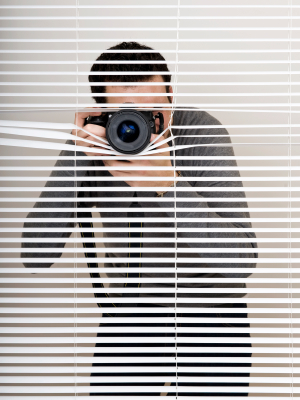9th Circuit ruling could limit publication of private celebrity photos, videos, sex tapes.
Treacherous waters ahead for news media
Things just got more treacherous for publishers and news organizations to run private photographs and videos of celebrities. This week, the 9th Circuit Court of Appeals issued a ruling in Monge v. Maya Magazines in which it addressed the question of whether a tabloid magazine had the right under the “Fair Use” provisions of U.S. Copyright law, to publish stolen photographs of a secret wedding between two celebrities.
A sticky copyright issue
This is one of the stickiest issues in copyright law, and the Court's ruling that the magazine did not have such rights strikes a blow to the common business practice of tabloids and tv gossip shows buying photos and footage of celebrities without regard for how those items were obtained.
Monge v. Maya Magazines involved photos of the secret wedding between Latina singer and model Noelia Lorenzo Monge and her manager/producer Jorge Reynoso. The wedding took place in 2007, and was kept secret (even from the couple's families) for 2 years before an acquaintance of the couple found the photos (taken by a witness at the Las Vegas wedding, using Reynoso's camera). That acquaintance sold the photos to Maya for $1,500 allegedly after attempts to extort the couple proved fruitless.
The photos were registered with the U.S. Copyright office in the couple's name, and the suit followed.
The Court Rulings
The lower court threw out the case on fair use grounds, but the appeals court has now ruled otherwise, pointing out that newsworthiness is but a single factor in the fair use analysis, and finding that the other factors weighed more heavily against a finding of fair use. Since the photos were used in their entirety, for commercial purposes, and were not “transformed” in a meaningful way by the defendant publication, the Appeals court held that the case for infringement may proceed.
Fair Use is a defense to copyright infringement cases based on the First Amendment's guarantee of freedom of speech and press, but it's not absolute.
Ammunition for celebrities
The potential ramifications of this ruling are far-reaching. In recent years numerous incidences of private photos and videos (including more than a few sex-tapes) featuring celebrities have been brought to light under circumstances similar to this case. Monge gives celebrities a new weapon in fighting publication of such materials. Now, news organizations, tabloids, TV gossip shows and websites will need to more carefully examine the pedigree and ownership of the material they purchase and publish. The Fair Use analysis just got trickier for journalists, editors and publishers. Even the major news media will have to consider more carefully whether certain material they publish really is defensible as fair use. Damages for copyright infringement can be significant, and courts can issue injunctions against publication, or order infringing material taken down from websites.
Unanswered Questions about copyright ownership
I. however, am a little bit puzzled by unanswered questions regarding ownership of the photos. Ordinarily, unless the person is an employee, or under a work-for hire contract, a photographer owns the copyright in photos he or she takes, regardless whose equipment is used,. So, I'm wondering how the couple was able to claim ownership. The Courts' opinion does not address this question, and the existence of a registration is prima-facie evidence of ownership.

http://www.abajournal.com/files/10-56710.pdf The link to the decision.
What it seems to be saying is that you can’t steal a persons pictures and sell them, then claim “fair use”.
Note sex tapes and explicit images never get leaked “for pay” without all parties in the picture/videos consent.
The 2257 rule is still in place and includes parties that “reissue” or “republish” “pornography”.
As I understood the case, reading it on another site, the memory card was taken by the bodyguard. It wasn’t his to start with, the camera and the SD card belonged to Monge and the pictures were taken by the chapel staff.
That to me changes EVERYTHING. If a second party takes pictures at the request of a first party, using the equipment and camera of the first party, and then a third party misappropriates the images and sells them that would seem to be what we have here.
It seems to me that if someome hands their camera to another person that implies a work for hire.
If the photographer holds the copyright, doesn’t the photographer need to get a release from the subject.? If a release was not granted then the photos can’t be used for profit. If this holds true then all paparazzi are in violation as soon as they sell the photo.